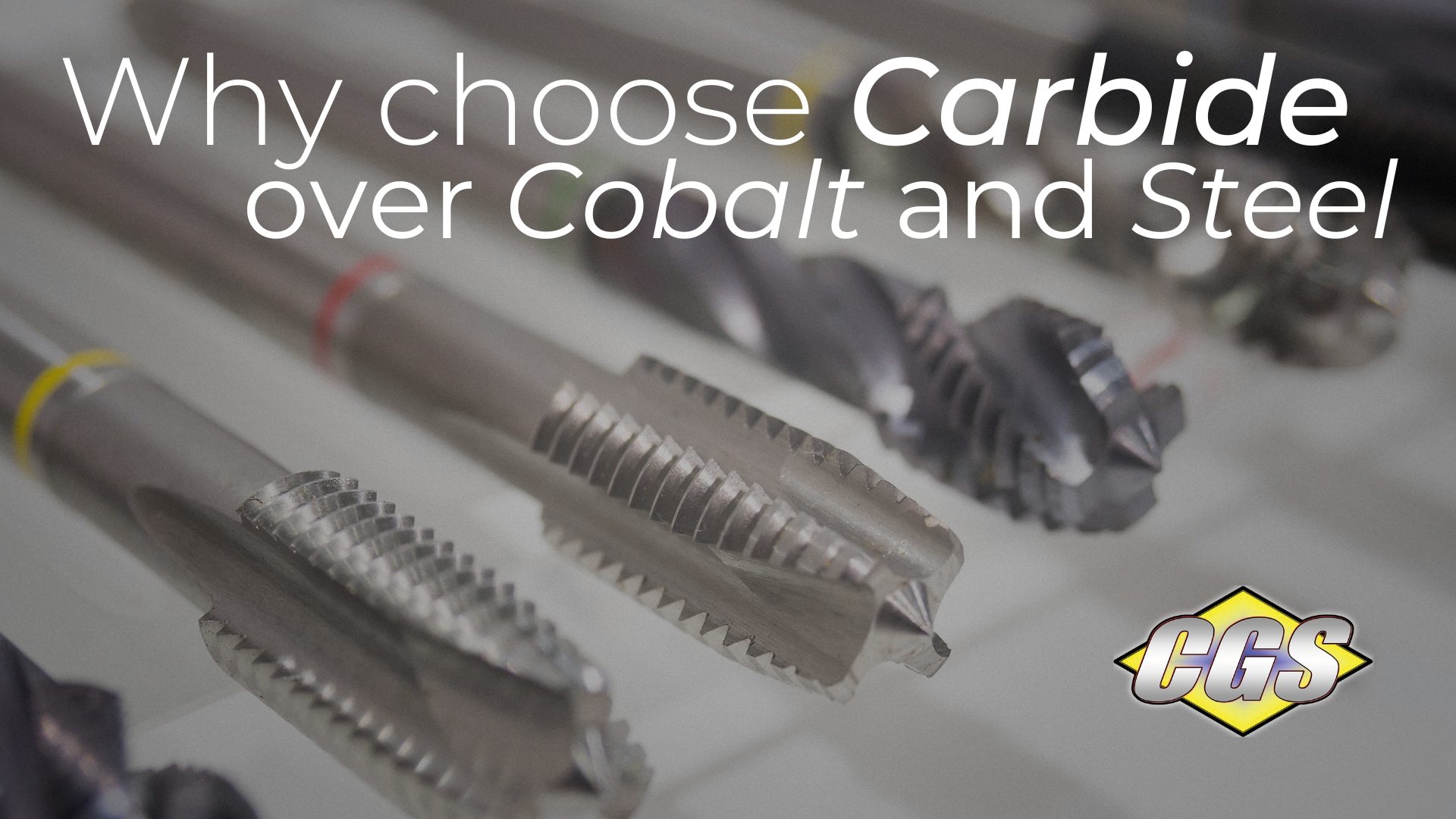A common question often asked in the machining industry is why should I choose carbide over steel or cobalt cutting tools. Carbide cutting tools offer several advantages over cobalt and steel (typically high-speed steel, HSS) for many machining applications. Here's a breakdown:
Hardness and Longevity:
- Carbide is exceptionally hard (around 82 HRC), much harder than cobalt (around 67 HRC) and HSS (around 60 HRC). This translates to a sharper cutting edge that stays sharper for longer, reducing the need for frequent tool changes.
Heat Resistance:
- Carbide excels at handling high temperatures generated during cutting. This allows for faster cutting speeds and better chip formation, improving overall machining efficiency.
Applications:
- Due to the above, carbide is ideal for cutting tough materials like hardened steels, stainless steels, and abrasive materials.
However, there are some downsides to consider:
- Brittleness: Carbide is quite brittle and can chip or shatter if not used correctly. This requires careful handling and proper machining parameters.
- Cost: Carbide tools are generally more expensive than cobalt or HSS options.
Cobalt vs Carbide:
- Cobalt sits between HSS and Carbide in terms of hardness and heat resistance. It's a good choice for applications where HSS isn't tough enough but carbide might be overkill. It's also less brittle than carbide.
Steel (HSS):
- HSS is the most affordable option but also the least durable. It's a good choice for lower-volume work with softer materials like aluminum or plastics.
In summary:
- Choose carbide for the toughest materials, high-speed machining, and long tool life, but be mindful of its brittleness and cost.
- Cobalt offers a good balance between HSS and Carbide for specific applications.
- HSS is the most budget-friendly option for softer materials and lower-volume work.
Ultimately, the best choice depends on your specific project requirements, material type, budget, and machining setup. Contact CGS Tool to learn more.



